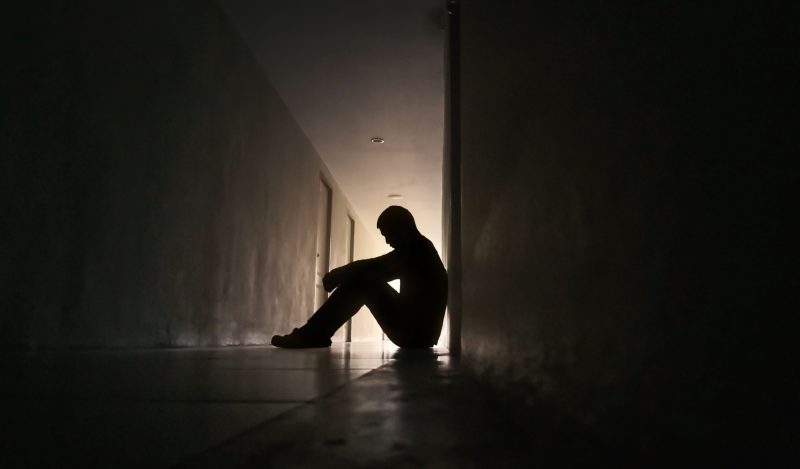Mental health took a hit during COVID. Research demonstrated the toll it was taking virtually from the start.
In a 2020 letter to the editor published in Psychiatry Research, a team from the University of Arizona College of Medicine reported on data collected from April to June demonstrating loneliness in US adults increased from April to May while those reporting the highest levels of loneliness in May and June were most prevalent in states that retained their shelter-in-place orders.
Several studies from Europe and Canada examining data from the early months of the pandemic generally found those experiencing the highest levels of loneliness were women, young adults, college students, and lower-income individuals.
A team from the Department of Public Health Sciences at the University of Miami Miller School of Medicine “documented elevated levels of loneliness, depression, anxiety, alcohol use, and drug use among young adults” between late April and mid-May 2020.
A 2022 article published in the prestigious Perspectives on Psychological Science reviewing research on mental health during the first year of COVID reported that people experienced increased psychological distress early in the pandemic.
Another 2022 review, this one focusing on mental health in children and adolescents, similarly found a general decline in mental health with increases in depression, anxiety, and suicidal ideation with older adolescents and girls hit the hardest. The authors of this review also suggested those living under stricter government-imposed control measures showed the worst trends.
As I have written previously, none of this should have come as a surprise to anyone, especially mental health professionals. And, to a large extent, it didn’t.
From virtually the start of the pandemic, there was no shortage of mental health professionals willing to state the obvious effect that social distancing and lockdowns would have on mental health, as it is well established that social isolation is deleterious to the mental and physical health of social mammals.
What is surprising, however, is the indifference of so many from psychology and related fields coupled with their dutiful attempts to reconcile the fact that humans are social creatures who can be harmed through social isolation with political and ideological dictats that humans are diseased creatures who must be isolated.
What is surprising is that a fair number of mental health professionals even sometimes appeared to search for some kind of rote technological means to fulfill social needs while in some instances even opining about the need to convince people to accept if not embrace their isolation as acceptable, necessary, and even normal, in essence validating all of Chief Bromden’s suspicions about psychiatry’s place in The Combine and doing Nurse Ratched proud.
Granted there were exceptions. Notably, early on, prominent TV therapists Dr. Drew Pinsky, a medical doctor, and Dr. Phil McGraw, a psychologist, spoke out about the need to resist panicking and the possible harms of lockdowns – although both came with decades of baggage from careers in radio and TV. Both also managed to embarrass themselves early on. Dr. Drew made baffling statements that elevated Anthony Fauci as the savior the world needed while simultaneously warning about the dangers of Fauci’s policies, sometimes in a single breath.
Dr. Phil made a major flub about the number of people who die in swimming pools each year while rattling off a list of stats on everyday things that pose a greater threat than COVID. Whether due to embarrassment or concern for their careers, both also quieted down on COVID for a bit, although Dr. Drew would go on to apologize for correctly downplaying the risk COVID after being called out by Ellen Pompeo (who also plays a doctor on TV albeit without the same credentials) and then later reemerge as a critic of pandemic policy and Fauci once it was safe to do so.
Others without the name recognition or reach also warned of the dangers of lockdowns to mental health and advocated for or at least seemed to advocate for a lifting of such restrictions in both interviews with local press and in peer-reviewed publications.
In May 2020 the head of the trauma department at John Muir Medical Center in Walnut Creek in California told a local ABC News affiliate it was time to lift shelter-in-place orders due to their impact on mental health.
In their 2020 Psychiatry Research letter to the editor, the team from the University of Arizona went a step further, seeming to criticize the normalization of a New Normal, writing, “the ‘new normal’ is not normal. Even in communities that have reopened, typical social interactions remain profoundly altered, as people maintain social distance, avoid congregating in groups, refrain from handshakes, hugs, and pats on the back, and wear masks that hide subtle facial expressions of emotion and muffle vocal intonations.
Many of the social behaviors that have evolved for generations as ways to express closeness, friendship, and a sense of community have been radically altered in the wake of the pandemic. There is no denying that staying at home alone can contribute to a sense of loneliness, but so can returning to a world where we remain awkwardly isolated in the presences of others. Consequently, increased loneliness is likely to remain prevalent for some time after communities reopen and attempt to return to normal.”
Seems about right.
However, statements such as those and calls to end lockdowns by mental health professionals were definitely not the norm for the greater part of the Pandemic Era. More standard protocol generally entailed accompanying any acknowledgment of the psychological harms of lockdowns with statements emphasizing their necessity.
The authors of one highly cited commentary in International Psychogeriatrics described social distancing as “crucial to limiting the spread of the virus” in their first sentence and “robust social restrictions” as “necessary” before later enumerating all the “physical and mental repercussions” these policies might cause.
Eric D. Miller of the Department of Psychology at Kent State wrote in an opinion piece for Frontiers in Psychology that “Social distancing and isolation are critical to preventing the transmission of this highly contagious virus…” after referring to COVID as a “particularly cruel disease not just because of its pathophysiology but also due to its potentially devastating consequences for engendering loneliness,” as if loneliness stemming from lockdowns was a symptom of the virus.
In an editorial titled “COVID 19 and Its Mental Health Consequences” and published by the Journal of Mental Health in 2021, a pair of scholars referred to lockdowns as an “important strategy to break the chain of transmission.”
Granted, journal editors and reviewers have considerable control over the content of an article working its way through the review process, to the point that an author challenging a recommendation for a nod to the importance of lockdowns despite the paucity of evidence supporting such policies could feasibly endanger an article’s chances of publication. However, once more, in these articles there was rarely any real discussion of whether the costs of lockdowns outweighed their presumed benefits by the mental health professionals and researchers writing these papers.
Instead, most appeared to accept lockdown as an inevitable part of life for the foreseeable future and treated life under lockdown as something to be managed and accepted, not challenged or resisted. The government could provide better funding for mental health. Insurance companies could better reimburse teletherapy sessions. Technology could help people stay connected while physically distancing.
Maybe helping people comply with and appreciate the importance of The Combine’s COVID mitigation efforts would help allay some psychological distress at least in some people. Occasionally there was a suggestion that socially-distanced outdoor interactions might be acceptable or that phased school reopenings could be attempted. But, by and large, very few mental health professionals, like so many people from so many other fields, had the courage to present any real challenge to these policies despite knowing the damage they wrought.
Join the conversation:


Published under a Creative Commons Attribution 4.0 International License
For reprints, please set the canonical link back to the original Brownstone Institute Article and Author.









